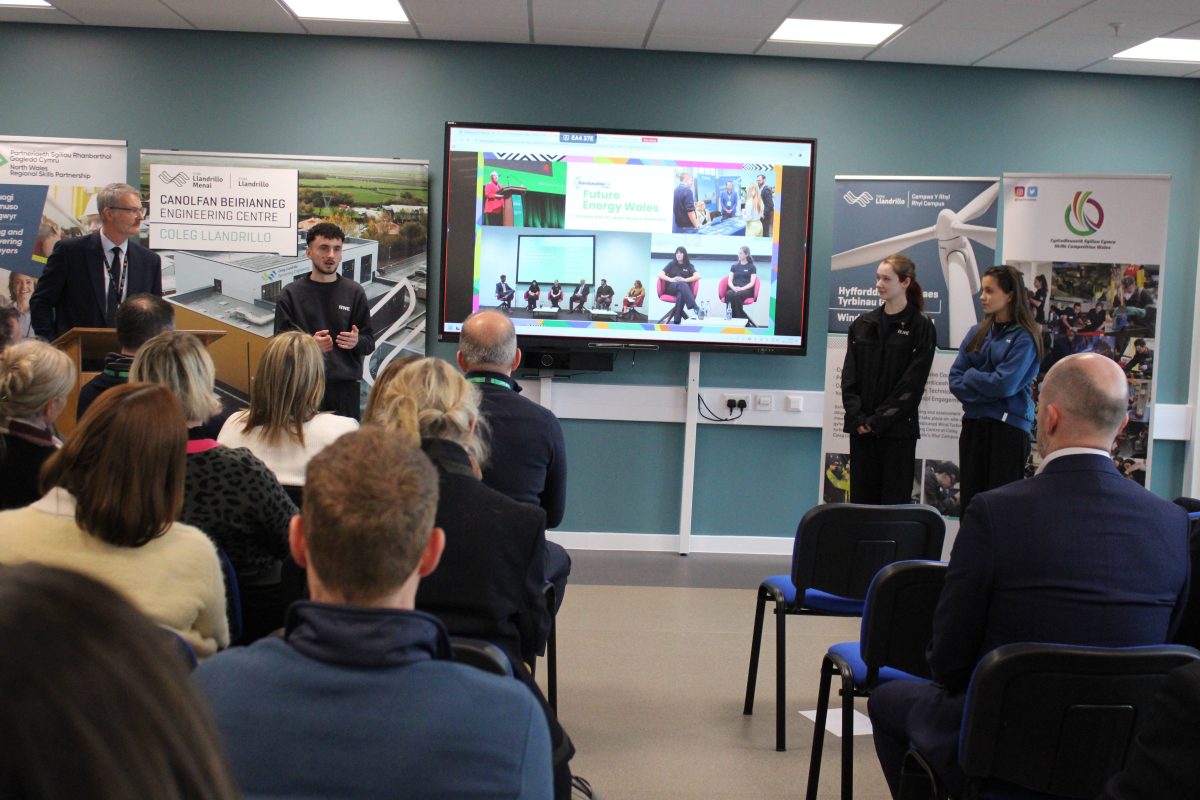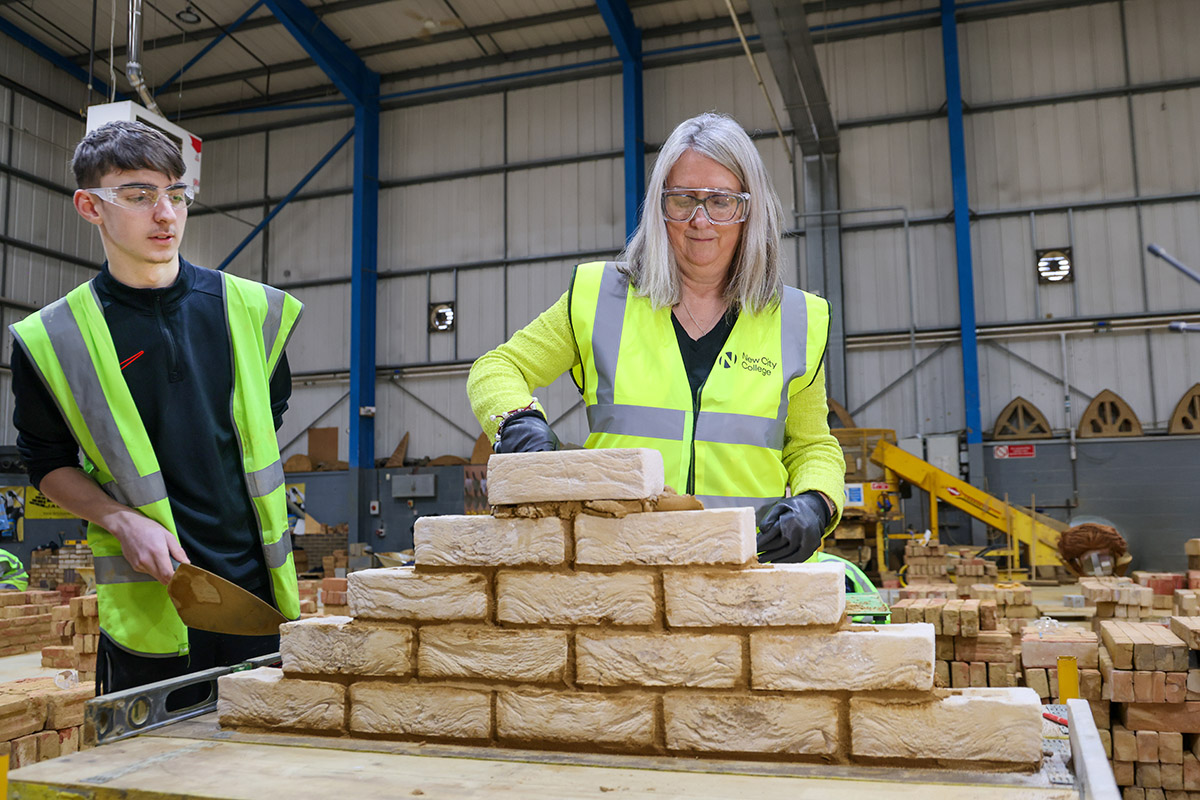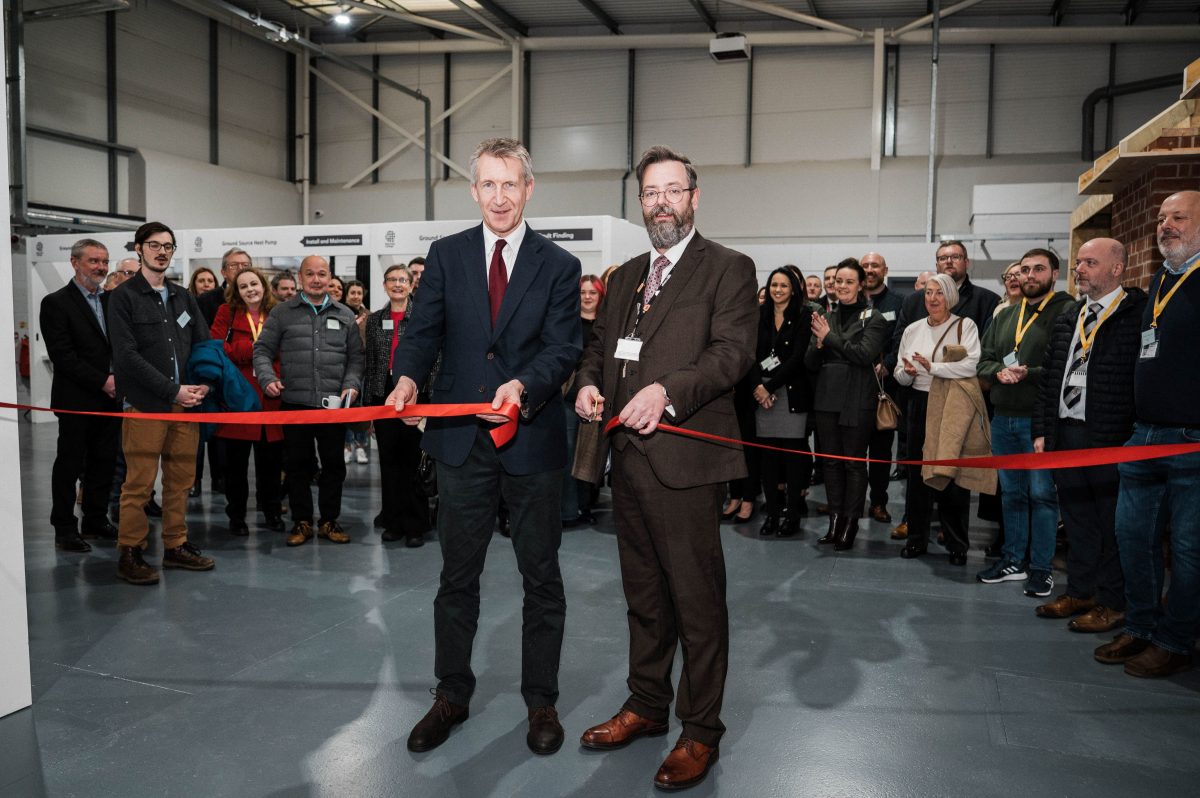Vocational and technical qualifications: the regulator’s perspective

Phil Beach’s speech to employers at Ofqual’s ‘Shaping the Qualifications Landscape‘ event:
Thank you. When Ofqual was established less than 10 years ago, it was very specifically about securing standards and promoting confidence in qualifications. We are not, as a regulator, responsible for subject content nor the curriculum, nor indeed the funding of qualifications. We’re always very focussed on the standards and quality of qualifications that we regulate. It is really important that employers have an understanding of who the players are in the system – including the Department for Education, the Institute for Apprenticeships, Ofsted, and funding bodies. Equally important is understanding how and why to engage with those bodies. I would want to stress the importance of employers engaging with the Institute around the development of new apprenticeships. We at Ofqual equally need to hear from employers, not just in relation to apprenticeships, but also about the broader qualification landscape and I will explain why as we go through.
The qualifications market is a big business. We regulate over 150 organisations, ranging from the very large household names that many of you would recognise to some very small, quite niche providers who provide certificates for thousands, sometimes hundreds, sometimes just tens, of people every year; so it’s a really diverse range of organisations. The market that we regulate was largely an inherited one in terms of both the regulated bodies and, to an extent, many of the qualifications. It is £billion market. Regulation becomes increasingly important during times of transition and change. I think we would all agree that we are in the midst of some significant change.
This is principally a conversation about vocational and technical qualifications, but it would be remiss of me not to talk very briefly about the substantial changes to GCSEs and A levels that we’re in the midst of at the moment. As you may know from our campaign, English and maths GCSEs were the first to be graded 9 to 1 from this summer, with the rest of the qualifications following. Do you understand the changes and what that means in practice? We’d be really interested in your feedback. Of course, for us it’s not just about changing letters to numbers on the certificate; it’s much more about making sure that the transition is smooth, that it’s well understood, and that for the learner it’s as fair as it can possibly be.
That work extended to A levels of course, and I just wanted to pause briefly on them, because there is a really interesting corollary with our work on vocational and technical qualifications. That’s because the demand of the A level qualification itself wasn’t actually changed, but there was a process where the A level qualifications were reviewed to make sure that they continued to meet the needs of the users of those qualifications. That was principally, but of course not exclusively, higher education. It was very much about getting the voices of users of those qualifications into a room to understand what they wanted from their A level science or their A level English to make sure we continue to meet their needs going forward. I see parallels with the importance of engagement with users of vocational qualifications and apprenticeship end point assessments to make sure at the outset that we’re designing them in the right way to get you what you want at the end. I will reflect back to the point about the importance of the Institute and employer panels there. It is really important that the Institute has that input from employers as T levels and apprenticeships standards are developed and delivered. And we are there to support that process.
That’s a very brief aside on GCSE and A levels. As I say, we’ll be really interested in your feedback later on, but now onto the main part of my conversation around the qualification landscape and more specifically where vocational and technical qualifications fit. I don’t think it would be any surprise to reflect that it is a relatively complicated landscape that we inherited seven years ago. This chart is an illustration of the qualification market if you consider it in terms of certificates awarded each year, where you can see GCSEs being the lion’s share on the left hand side, a very significant number of AS and A levels on the top right, quite a few others around functional skills and other qualifications that we recognise, and then a group in the middle of other vocational qualifications. That is a catch-all for very many qualifications, some of which are funded by government and very many of which aren’t. So if you look at it from that perspective, you can get a sense of the relative sizes in terms of students taking the qualifications. But if you consider the same categorisation by the number of qualifications available, it’s quite a different picture. What you see is a significant number of vocational and technical qualifications in that block that we largely inherited when we were established in 2010 – and in terms of qualification numbers – quite a small number of GCSEs and A levels, and other qualifications. So I think that presents a clear picture of the challenge that we face as a regulator in terms of volume of vocational and technical qualifications, but equally the importance affording them the appropriate regulatory oversight and strategic importance.
The points I will make here are that we don’t control the entry of qualifications into the market in terms of determining whether a qualification is or isn’t required; we regulate to make sure that when the qualification is in the market, it meets the needs of the users of that qualification. That is to say, if employers want a qualification or if there’s a defined and proven need for a qualification, and it meets our requirements, then we have no means to withhold entry into the market. Whilst we don’t limit choice, we make sure as far as we practically can that that qualification meets the quality needs of those who have requested it.
We recognise that the qualification market is relatively complicated and, therefore, a year or two ago, we tried to bring a sense of order to it in this publication, the Regulated Qualifications Framework. It’s a way of trying to categorise qualifications. On the bottom there you can see qualification size and then it’s designed in terms of learning hours typically associated with the qualification. On the Y axis you have qualification level running from entry levels 1, 2, and 3, up to qualification level 2 that might include, for example, GCSEs, or qualification level 3 that might include A levels and others, all the way up to 6, 7, and post-graduate qualifications at level 8. It illustrates that at any level, but particularly at the lower levels, you can have qualifications at a broadly common level of demand, but very different sizes in terms of learning hours.
The other point I’d want to make is that from that taxonomy, it’s quite tempting to try and draw quite distinct parallels between qualifications that are at the same level. It’s tempting, but quite difficult. Just because you have a level 3 qualification in one area, it doesn’t necessarily mean it is of the same academic and other demand as another level 3 qualification. It depends on the context; the purpose of the qualification and many other things. Beth Black [Ofqual’s Associate Director for Research and Analysis], who you will hear from later, and others in Ofqual, have been trying to think about how we can use the data available to try and give you a better way of working through the system. Today, we’re launching a prototype. It’s something that you can engage with and give us some feedback through the day. It’s an interactive tool that you can navigate and use to explore the vocational and technical landscape a bit more freely. There are a number of nodes that relate to particular sectors, and you can see from there the range of qualification providers that are developing and delivering qualifications within that specific sector. Then you can further interrogate it to look at the qualifications that they offer and even how many certificates they issue in those qualifications each year. So there is a wealth of information there to explore. As I say, we think this is the sort of thing that you want, but of course we want to hear from you, so this is the prototype. If there are things that you would want to see that aren’t quite there then please let us know. This is an opportunity to shape our work at a relatively early stage and it’s really important to hear what you say.
Moving on then to how we regulate, we want to have a conversation about what we do on your behalf as employers and users of qualifications, and give you an understanding of the sorts of things that we do on a day-to-day basis. Just as regulators such as Ofwat and Ofgem regulate for consumers of utilities, we consider our role to be regulating on behalf of consumers of qualifications, and that is to say we regulate for consumers. We don’t regulate consumers and I think it’s a really important message to get across.
To be really clear, our regulatory relationship principally is between us and those that we regulate: the awarding organisations. In doing that, we need to understand what it is that users of qualifications want. There are all sorts of legitimate needs and requirements from the qualification and what we find is that employers are mainly clear about the things that they want to measure and very clear about the things that they want young people and others to demonstrate. But what we also find is that when you start to look at some of those needs in terms of qualifications, sometimes they present quite specific assessment challenges. So a simple example here, if for example a qualification is to assess handwriting, that in and of itself is achievable but it presents all sorts of technical challenges about how good is good enough, how we make consistent judgments over time and indeed what the implications are for the deliverers of those qualifications, such as how to do paper-based assessments. So there are all sorts of issues of assessment associated with the regulatory judgments that we make. In terms of regulating to meet your needs, what I would say is that there are many organisations that depend on qualifications. We know that, and we regulate for all of them. But I’ve put this slide up to reflect on a visit I went on a couple of weeks ago. What really struck me in visiting this employer was that not all employers are the same in scale, scope, or in remit; it was an interesting visit for two reasons. One, because of the inspirational work that happens in this location around childcare, but two, because that individual that runs that small business is actually the trailblazer lead for one of the biggest standards being developed at the moment. It really struck me not just the sheer breadth and variety of the employer landscape, which won’t surprise any of you, but some of the fantastic work that is being done in some small organisations in developing the new standards for apprenticeships.
This slide is entitled ‘using our powers’. That is to say how we operate as a regulator. We effectively put controls in place to support what you need. So we control the entry into the regulated market. If an organisation wants to offer regulated qualifications, they need to go through a process of recognition by us. We then control the framework of qualifications to make sure qualifications continue to meet your needs and we have a range of regulatory tools to make sure that happens. That gives you a hard edged view of us as a regulator and that is fine, to a degree, but I don’t want you to walk away thinking that as a regulator we’re all stick and no carrot. That could not be further from the truth. Although we have that regulatory framework in place, certainly over the last 18 months, we have been working with awarding organisations to drive up the quality of provision rather than just punishing them where that provision isn’t appropriate. We see collaboration as being really important, and therefore the message on this slide isn’t so much about a framework and governance, it is about nuance as a regulator and we look at every regulatory incident on its own merit. Therefore, we don’t think we are an organisation that is a red tape, bureaucratic, slow moving regulator. We think we are agile, quite fast paced and open to innovation and change. We are committed to acting in a way that is proportionate and transparent and supportive of all the organisations who are trying to develop and deliver qualifications. Of course, we do need to avoid burden on those that we regulate. We need to take really careful decisions on engaging with awarding organisations to make sure that we don’t increase burden.
Our engagement with awarding organisations, not least through organisations like the Federation of Awarding Bodies is really important to us. We would rather engage and work collaboratively to fix a problem in the sector, rather than punish organisations when things go wrong. And that notion of a conversation, working together with people, is what we’re all about in terms of employers too.
I was at a trailblazer in Birmingham yesterday afternoon, and they said that they engaged us with trepidation, because we are the regulator. They didn’t really know what to expect, but they figured it would look a bit like this slide. But actually, what they said, completely unprompted was that their experience was wholly positive and they were pleasantly surprised about our proactive response to helping them develop assessment plans and getting their standards onto the market, working effectively with the Institute. So there is some verification that our approach to engaging and supporting trailblazers as a quality assurance organisation is beginning to bear fruit. We know this has further to go, but it was certainly a reassuring early sign.
We are a risk-based regulator, why, because given the number and complexity of qualifications it is simply not possible to look at every single one. We need to make judgements about where we place our limited resource. Therefore, we are really keen to hear from people that have a perspective on the regulated market and that, of course, includes everybody in this room.
We are active in vocational and technical qualifications in a way that we haven’t been until around a year or so ago. The journey here for us probably started with a Panorama programme where concerns were raised around the security sector, and we worked with colleagues in the Security Industry Authority and the Home Office to make sure we understood and addressed them. More recently, we have taken decisive and prompt action where we had concerns that certificates were being given to students, some of whom were apprentices, without sufficient controls around whether they were actually demonstrating the required knowledge, skills, and behaviours. We are acting decisively to make sure that public confidence in qualifications is there. Most recently, there was a Panorama programme around the particular issue of qualifications where, I am delighted to say, we had already identified and started to take action on some of these issues through pulling together intelligence sources. The message from our recent experience is that we feel increasingly proactive, our analysis feels increasingly sophisticated, and we take intelligence feeds from many sources. We depend, to an extent, on what people tell us about qualifications and their experience of them. It would be interesting to hear your views, again, in conversation.
I am going to touch very briefly on reform just to give you a perspective of where we stand. Reform is complicated, it relates not just to an individual qualification; rather it plays across an entire sector. Qualifications interact with each other and, therefore, our engagement, we think, is really valuable. We think it is important for employers or other users of qualifications to describe what they want, first of all, in a qualification before you can then decide how to assess that qualification. There is a chronology to reform that we think is really important. Again, the role of the Institute is critical here in terms of both apprenticeships and T levels. We are keen to make sure that that chronology is followed through.
The timeline and the complexity of reform is quite marked; on this slide you can see some of the constituent parts of reform. Functional skills qualifications are under reform now. Our consultation is closing shortly. Awarding organisations are gearing up to start developing the new qualifications that should hit schools and colleges in 2019. Apprenticeships transition is upon us. There will be no new starts for the old framework apprenticeships from 2020, but you would expect us to pay particular attention to the existing apprenticeships and not just the reformed ones that are rolling out. Why, because there are around 880,000 apprentices on the old framework apprenticeships, and 10 to 15,000 on the new standards apprenticeships. As a regulator, we are taking a particularly close look at those on the old frameworks to make sure that quality is maintained all the way through to the end. And then there are T levels, with the introduction of the first three routes in 2020, with a full rollout by 2022.
One brief slide on each of those before I close. Our role in apprenticeships is really hitting its stride. It is important to recognise that Ofqual is one of four quality assurance options available. The roles and responsibilities for apprenticeships are really clearly delineated. Where are we chosen as the external quality assurance provider, we want to make that engagement as positive as possible for employers, and to make sure the employers get what they want. What does that mean in practice? We want to look at assessment plans at an early stage with you, to make sure we are confident that that assessment plan can support end-point assessment that is consistent, reliable and valid. We have engaged with around 100 trailblazer groups so far, and today we have published the findings of what we have seen from those. What we’re saying is, if you’re thinking of using us as an external quality assurance provider, lots of folks have done this before and these are the sorts of experiences and things that we have seen from those submissions. I think it is a really useful guide to aid your thinking.
Before any end-point assessments hit the market we want to have a look at them to see whether the awarding organisations have translated the intent of the assessment plan into a product that meets your needs. Again, back to the importance of involving employers, we are really keen given the amount of time and energy you have expended in getting the standard and the assessment plan right, to work with us to look at that end-point assessment. We have the assessment expertise but we don’t have the employment and the sector expertise. We really appreciate you working with us to make sure that all of that hard work is being translated, and an end-point assessment delivers what you want.
I will finish with a very brief mention of T levels. Reform, as you know, is upon us, with the department issuing a T level action plan only a few weeks ago, and some outreach and consultation events happening. I will finish with where I started, which is to say that we are a regulator of qualifications, so I think this diagram is really helpful. What you see there is a T level, that on current planning, consists of a number of discrete elements including work placement. We don’t regulate work placements; that is not our business. T levels are quite rightly the responsibility of the Institute for Apprenticeships and Technical Education; they own the T level brand, the delivery of the T level programme, and we talked about the importance of employer engagement with that. For us, as the regulator of national qualifications, we’re involved in those qualifications that sit within the T level. We are absolutely committed to working with you and the Institute to make sure that the quality of those qualifications meets the needs of all of the people in this room.
So the key messages that I hope you have taken from today are that we recognise that the qualification landscape is complicated; we want to help you understand and navigate it as best we can. We also really value your comments on what it looks like. For us as a regulator, we regulate on your behalf so that you get what you want from qualifications and you have confidence in them. And then lastly, reform is underway, and we want to work with you. That is not to say we want to duplicate anything that the Institute quite rightly has leadership of, but we have a specific role in getting employers involved in looking at some of the products we have developed, working with our assessors to make sure that the qualifications function in the way that you had envisaged. Those are the three messages I hope you have taken away today.
Thank you.
Phil Beach, Executive Director for Vocational and Technical Qualifications, Ofqual
Click here to see the accompanying slides.











Responses